Difference between revisions of "Tanning leather"
| (44 intermediate revisions by one user not shown) | |||
| Line 5: | Line 5: | ||
==What is ‘tanning’?== | ==What is ‘tanning’?== | ||
| − | The | + | The use of animal skins dates back to the Stone Age. Presumably as [[Leather tents & Tent walls|tarpaulins]], protective [[Leather clothing|clothing]] or for the manufacture of [[Leather belt|belts]], [[Leather straps|harnesses]], [[Leather handbags|bags]] and [[Leather bucket|containers]]. At the beginning the skins of the animals were [[Drying leather|dried]] and possibly also [[Brain tanning|smoked]]. Through the use of skins as tent walls and the fires in the tents, the first conservation experiences of the indigenous people of North America were probably made by smoking the tent walls. |
| − | |||
| − | + | <p align=center> | |
| + | [[bild:Zeltwand-Leder-01.jpg|500px]] | ||
| + | </p> | ||
| + | <p align=center> | ||
| + | ''Model of an Indian tent made of leather, seen in the [[Leather museum|DLM - German Leather Museum in Offenbach]].'' | ||
| + | </p> | ||
| − | |||
| − | + | [[Tanning with fats and oils|Fats]] were worked into the leather to [[Waterproofing leather|waterproof]] it and make it [[Haptic evaluation of leather surfaces|softer]]. However, this type of preservation was not real tanning. | |
| + | In olden times, tanning was considered to be an ‘odoriferous’ trade. Tanning by ancient methods was indeed extremely foul- smelling and hence most [[tannery|tanneries]] were situated in the outskirts of towns. The use of urine and animal faeces, combined with the smell of decaying flesh due to the absence of [[Preservation by drying, salting or freezing|conservation options]] was what made ancient tanneries so odoriferous and the profession of [[tanner]] unpopular. | ||
| + | Proper '''tanning''' is the most important step in [[leather production]]. It is just one part in the entire process of manufacturing leather. Tanning is the method of preserving animal [[Hide - Skin|skin]], with or without [[Fur - Fur skin|hair]] using [[tannins]]. These are acidic chemical compounds that stabilise the fibre structure of the skin and prevent it from decaying, decomposing and oxidising. A [[tannery]] is where these skins and hides are processed and the profession is called [[tanner]]. The tanning process involves many stages where the skins have to be treated first and, once tanned, depending on the application and specific customer requests, the leather is [[leather colour|dyed]], [[Ironing leather|ironed]], [[Sanding leather|sanded]], [[Pull up leather - Greased leather - Waxed leather - Oiled leather|oiled]] etc. There are endless variations | ||
| + | |||
| + | |||
| + | <p align=center> | ||
| + | [[bild:Gerberei-19.jpg|500px]] | ||
| + | </p> | ||
<p align=center> | <p align=center> | ||
| − | + | [[bild:Gerberei-24.jpg|500px]] | |
| − | [[bild:Gerberei-24.jpg| | + | |
</p> | </p> | ||
| − | ''' | + | '''Purpose of tanning leather:''' |
| − | * | + | * The skin is made up of one third protein (collagen). Tannins preserve the flexibility of these protein strands and the entire tanning process prevents the protein filaments from hardening and becoming tacky on drying. ‘[[Parchment]]’ is not tanned and hence different to leather. It is hard and translucent. |
| − | * | + | * Tanning makes the leather resistant to decay (self-decomposition by microorganisms). |
| − | * | + | * The swelling of the fibres on wet leather is prevented. |
| − | * | + | * Temperature resistance is significantly increased. Untanned skin [[shrunken leather - leather shrinkage|shrinks]] in water at 62 ° C. Chrome-tanned leather is resistant up to 100 ° C. The fibres do not stick to each other and the leather does not shrink. |
| − | ''' | + | '''Other customer requests that a [[tanner]] has to fulfil:''' |
| − | * | + | * The leather must be as [[Haptic evaluation of leather surfaces|soft or firm]] as the customer wishes. |
| − | * | + | * The leather needs to be [[Breathability of leather|breathable]]. |
| − | * | + | * The tanner must ensure that the appropriate [[Leather colour|colour]] and the appropriate [[Gloss of leather|gloss level]] is achieved. |
| − | * | + | * It must be [[Leather quality|resistant to tearing, abrasion resistant, easy to clean, light resistant and durable]] and a lot more. |
| − | == | + | =="Real tanning" and "false tanning"== |
| − | + | There are two distinguishable types of tanning: Real tanning and false tanning. | |
| − | + | Real tanning is when [[tannins]] form an irreversible bond with the skin fibre. This is what happens when hides undergo [[Chrome tanned|chrome tanning]] or [[Vegetable-tanned leather|vegetable tanning]] processes. | |
| − | + | However, in some cases the binding of [[tannins]] to the leather fibre is washable and unstable. This can be observed in methods such as [[Tawing with alum|tawing]], [[tanning with fats and oils]] and [[brain tanning]] (Special case of tanning with fats and oils). The simple process of treating dried rawhide with oils resulting in parchment is not called "tanning" and parchment cannot be referred to as leather. | |
==Tanning methods== | ==Tanning methods== | ||
| − | + | The main tanning methods are '''[[Chrome tanned|chrome tanning]]''' (most of the [[Leather clothing|clothing leather]] and [[Leather shoes#Main leather terms for shoes#upper leather|upper leather of shoes]]), '''[[Vegetable-tanned leather|vegetable tanning]]''' (most [[Leather belt|leather belts]], [[Leather shoes#Main leather terms for shoes#sole leather|sole leather]], [[Leather saddle|riding leather]]) and '''[[Synthetic tanned|synthetic tanning]]'''. | |
| − | + | Often various tanning methods are combined in order to achieve certain properties of the final product. For example, the combination of synthetic tanning with chrome or vegetable tanning. This is known as '''combination tanning'''. Variants include, for example, vegetable with subsequent chrome tanning (semi-chrome leather) and chrome tanning followed by vegetable tanning (chrome retanning). | |
| − | In | + | In France, Holland and Italy the term semi-chrome leather, includes both chrome tanning with vegetable re-tanning as well as a vegetable tanning with chrome re-tanning. |
<p align=center> | <p align=center> | ||
| − | [[bild:Gerberei-14.jpg| | + | [[bild:Gerberei-14.jpg|500px]] |
| − | [[bild:Gerberei-15.jpg| | + | </p> |
| + | <p align=center> | ||
| + | [[bild:Gerberei-15.jpg|500px]] | ||
</p> | </p> | ||
| − | + | Another well-known kind of tanning is '''[[Tanning with fats and oils|tanning with fats and oils]]'''. Therefore, fatty animal substances such as [[brain tanning|brain]], fish oil or tallow are used. [[Chamois leather]] is the result of such a tanning method. | |
| − | + | One of the oldest tanning methods is ‘[[Tawing with alum|Tawing]]'. This converts the animal hide using a mixture of alum (aluminium sulphate) and saline. Tawing produces white leather. This tanning process is not permanent because the tannins can be flushed out by water. Therefore this type of leather is not washable. | |
| − | + | ||
| − | + | ||
<p align=center> | <p align=center> | ||
| − | [[bild:Gerberei-16.jpg| | + | [[bild:Gerberei-16.jpg|500px]] |
| − | [[bild:Gerberei-Gerbfass-03.jpg| | + | </p> |
| + | <p align=center> | ||
| + | [[bild:Gerberei-Gerbfass-03.jpg|500px]] | ||
</p> | </p> | ||
| − | + | [[Tanning with fats and oils]] is one of oldest methods known to mankind and has been practised since about 6,000 BCE. Vegetable tanning dates back 4,000 years (Bronze Age). | |
| − | + | Since the end of the 19th century, [[chrome tanned|chrome tanning]] has been the most common and preferred method of tanning. Mainly due to the speed at which leather can be produced (a few days) and the simplicity of the working process. In contrast, [[Vegetable-tanned leather|vegetable tanning]] requires 15 months or longer. Vegetable tanning doesn't take that long these days. In an ecological comparison of different types of tanning, 54 hours were calculated for the tanning process with [[Chrome tanned|chrome tanning agents]], 55 hours for [[Synthetic tanned|synthetic tanning]] and 59 hours for tanning with [[Vegetable-tanned leather|vegetable tanning agents]]. Chrome tanning is still cheaper and faster, but the [[leather quality|properties]] of chrome-tanned leather are also superior to those of vegetable-tanned leather in many areas, although these also have areas where they are superior to chrome-tanned leather. | |
| − | |||
| − | + | In 2001, 78% of all leather in Germany was chrome-tanned, 21% vegetable-tanned and only 1% tanned as chamois. In 2017, it was assumed that leather was approximately 80% chrome tanned, 15-18% vegetable tanned and 2-5% [[Chrome tanned#Chrome-free leather - FOC = Free of Chrome|chrome-free]] leather. | |
| + | |||
| + | The type of tanning method can be identified by the colour of the leather (before [[Leather colour|colouring and before finishing]]). If [[Vegetable-tanned leather|vegetable tanned]], the leather is brown. If [[tanning with fats and oils|tanned with fats or oils]], it is yellowish. When [[Tawing with alum|tawing]] is used, the leather is white and [[Chrome tanned|chrome- tanned]] results are bluish grey ([[wet blue]]). | ||
| Line 84: | Line 96: | ||
{| class="prettytable right" | {| class="prettytable right" | ||
| − | |+''' | + | |+'''Proportion of [[chrome tanned]] leather in various sectors of use''' |
| − | !bgcolor="#cccccc" | | + | !bgcolor="#cccccc" | Sector|| bgcolor="#cccccc" | [[chrome tanned]] leather in % || bgcolor="#cccccc" | trend |
|- | |- | ||
| − | | [[ | + | | [[Leather shoes#Main leather terms for shoes#upper leather|Shoe uppers]] |
|style="text-align: center"| 95 | |style="text-align: center"| 95 | ||
| − | |style="text-align: center"| | + | |style="text-align: center"| no changes |
|- | |- | ||
| − | | [[ | + | | [[Leather furniture|Furniture leather]] |
|style="text-align: center"| 70 | |style="text-align: center"| 70 | ||
| − | |style="text-align: center"| | + | |style="text-align: center"| decrease in favour of [[Chrome tanned#Chrome-free leather - FOC = Free of Chrome|free of chrome]] |
|- | |- | ||
| − | | [[ | + | | [[Car leather]] |
|style="text-align: center"| 50 | |style="text-align: center"| 50 | ||
| − | |style="text-align: center"| | + | |style="text-align: center"| decrease in favour of [[Chrome tanned#Chrome-free leather - FOC = Free of Chrome|free of chrome]] |
|- | |- | ||
| − | | [[ | + | | [[Leather clothing|Clothing leather]] |
|style="text-align: center"| 100 | |style="text-align: center"| 100 | ||
| − | |style="text-align: center"| | + | |style="text-align: center"| no changes |
|- | |- | ||
| − | | | + | | [[Leather accessories]] |
|style="text-align: center"| 60 | |style="text-align: center"| 60 | ||
| − | |style="text-align: center"| | + | |style="text-align: center"| no changes |
|- | |- | ||
| − | | [[ | + | | [[Leather shoes#Main leather terms for shoes#sole leather|Sole leather]] |
|style="text-align: center"| - | |style="text-align: center"| - | ||
| − | |style="text-align: center"| | + | |style="text-align: center"| no changes |
|} | |} | ||
| − | '' | + | ''Source: Magazine "Leder & Häute Markt" 3/2008, page 46.'' |
</center> | </center> | ||
| Line 119: | Line 131: | ||
<p align=center> | <p align=center> | ||
| − | [[bild:Vakuum-Trocknung-01.jpg| | + | [[bild:Vakuum-Trocknung-01.jpg|500px]] |
| − | [[bild:Gerberei-03.jpg| | + | </p> |
| + | <p align=center> | ||
| + | [[bild:Gerberei-03.jpg|500px]] | ||
</p> | </p> | ||
==Re-tanning== | ==Re-tanning== | ||
| − | + | Primary tanning is not always sufficient to maintain the desired characteristics specified by the customer. It is therefore re-tanned. Re-tanning affects the [[Haptic evaluation of leather surfaces|feel of the leather]], the [[leather colour|dyeability]], fullness of the leather, the fineness of the [[Grain side|grain]] and the stability of grain and other factors such as [[Colour fastness - Light fastness of leather|light fastness]] before [[finish|finishing]]. | |
| − | + | The [[tannins]] used for this process can be different from those used in the primary tanning stage. After [[Chrome tanned|chrome tanning]], the leather is often [[Vegetable-tanned leather|re-tanned]] with vegetable tanning agents. Such a process is called combination tanning. This process is called combination tanning. | |
| + | Re-tanning also has a fading effect which can be enhanced by lightening tannins. This is important for light [[aniline leather]] without [[leather colour|pigmentation]]. After chrome tanning, leather is green-bluish. The leather dye has no opacity. White leather would then be always greenish-bluish. By re-tanning, the leather can be bleached to get better results. | ||
| − | + | Overall, the color-changing properties must be taken into account during retanning so that a color-optimal end result is achieved. In the process of re-tanning, pigments can be [[Barrel pigmentation - Drum pigmentation|added into the drum]], which optimizes and equalises the surface colouration. | |
| − | + | ||
==[[Tannery]]== | ==[[Tannery]]== | ||
| − | + | [[Tannery|Tanneries]] are plants, where [[tanner|tanners]] transform the skin of slaughtered animals into [[leather]]. The [[rawhide]] undergoes many steps before becoming leather or [[Fur - Fur skin|fur]]. Depending on the purpose of the leather, it may then be used by various industries to produce [[Leather shoes|shoes]], [[Leather clothing|clothing]], [[Leather handbags|bags]], [[Car leather|automotive]] and [[Leather furniture|upholstered furniture]]. The end user rarely gets the hides or skins unprocessed in their hands. Maximum [[Sheepskin - Lambskin|sheepskins]] or decorative [[Hide - Skin|skins]] are desired by consumers without any further processing. | |
<p align=center> | <p align=center> | ||
| − | [[bild:Gerberei-05.jpg| | + | [[bild:Gerberei-05.jpg|500px]] |
| − | [[bild:Gerberei-04.jpg| | + | </p> |
| + | <p align=center> | ||
| + | [[bild:Gerberei-04.jpg|500px]] | ||
</p> | </p> | ||
| − | == | + | ==Tanning drum== |
| − | + | Everybody associates rotating tanning drums when thinking of [[Tannery|tanneries]]. Leather rotates in barrels on many operating steps in the tannery. The production process roughly generates 5 to 10 m³ of * [[Leather sustainability and traceability|wastewater]] per bovine hide. | |
| + | |||
| + | Tanning drums are robustly constructed and must withstand the forces acting upon them. The forces exerted on the rotating drums are generated by the rotational speed, the weight and volume of the contents (liquid and hides), and the internal structure. Commonly found within the drums are steps and/or pegs that control the movement of the hides, with variations in their design depending on the specific requirements. But there are also other internal constructions with the same effect. These resistances facilitate the optimal rotation of the hides, ensuring the most effective flushing of the hides and preventing them from tangling or clumping together. They keep the hides separated and ensure they can move and be rinsed freely during the tanning process. | ||
| + | |||
| + | In order to control the weight of the hides in a tanning drum, the load of hides is weighed beforehand to avoid overloading and to ensure the correct ratio of the hides to the liquid including the substances added. Die Gewichtsermittlung erfolgt über den beladenden Gabelstapler oder Kran oder über Förderbänder mit automatischer Gewichtsmessung. | ||
<p align=center> | <p align=center> | ||
| − | [[bild:Gerberei-Gerbfass-01.jpg| | + | [[bild:Gerberei-Gerbfass-01.jpg|500px]] |
| − | [[bild:Gerberei-Gerbfass-04.jpg| | + | </p> |
| + | <p align=center> | ||
| + | [[bild:Gerberei-Gerbfass-04.jpg|500px]] | ||
</p> | </p> | ||
| − | + | Apart from wooden drums, stainless steel and plastic drums are also used in the tanning industry. However, there are many reasons why wooden drums are preferred over other types. Wood can withstand strong alkaline solutions and chemicals used in the initial stages of the tanning processes. They are very sturdy and have good insulation properties, unlike metal. They are also cheaper than stainless steel drums and are easy to work with when modifications or repairs are required. | |
| − | + | There are lot of regional differences within this too. The use of plastic barrels is higher in the USA and wooden or metal drums are used more in Europe. The use of wooden barrels also has a long tradition. | |
| − | ==[[ | + | ==[[Leather industry]]== |
| − | + | The [[leather industry]] is declining in Europe due to environmental requirements. China has become the world's largest leather manufacturers. Specialised tanneries that produce high quality leather, and are focused on the higher price segments, are the only ones that have a good chance of survival in Europe and the rest of the western economy. Processing leather is a highly labour-intensive task. Leather needs to be cut, punched, sewn and glued. Such work is much cheaper in Asia. The manufacturing of [[Leather shoes|leather shoes]] and [[Leather clothing|clothing]] in the far eastern countries is done in high volumes but not all of them are necessarily of high quality. One of the ways for local manufacturers in the developed nations to fill a gap in the market, is by focusing solely on high quality [[Leather shoes|shoes]], [[Leather clothing|clothing]] and [[Leather furniture|furniture leather]]. Also [[car leather]] is still mostly produced in industrialised countries. [[Tannery|Tanneries]] focusing on such segments still exist today. | |
<p align=center> | <p align=center> | ||
| − | [[bild:Gerberei-09.jpg| | + | [[bild:Gerberei-09.jpg|500px]] |
| − | [[bild:Gerberei-12.jpg| | + | </p> |
| + | <p align=center> | ||
| + | [[bild:Gerberei-12.jpg|500px]] | ||
</p> | </p> | ||
| − | == | + | ==Environment and ecology== |
| − | + | Poor treatment of animals, ‘informal’ slaughterhouses and unreasonable working conditions in tanneries in far eastern countries are all problems that are regularly mentioned in the media. This creates an impression that these practices may be common throughout the rest of the world as well. However, this could not be further from the truth. Within Europe, slaughterhouses and tanneries are highly monitored and ensure they follow all the rules and guidelines to avoid negative press. A lot of tanners are pioneering a lower use of raw materials and energy, while constantly trying to find innovative ways of recycling waste and ensuring optimum wastewater treatment. | |
| − | + | The times are long gone when tanners were directly exposed to fumes from acids and chemicals or when there was a lack of health and safety regulations around workplaces and water was heavily polluted in Europe. However, it is true that there are a lot of countries where little or no progress on such matters has been made. Especially small tanneries in poor countries manufacture leather which is processed by children working under terrible conditions. | |
| − | + | However, consumers are afraid to poison themselves or to support poor practices by buying leather objects from such manufacturing plants. | |
| + | Most of this leather is for local markets and does not enter international trade because of poor [[Leather quality|quality]]. Much of the responsibility lies with local governments and politicians to close tanneries without environmental standards and that risk their employees' health, or relocate them in areas where it affects the quality and supply of natural resources, such as access to clean water. In 2014, the Chinese government decided to close tanneries that burdened the environment, if they did not invest in improvements. | ||
| − | + | But there is still a long way to go before the global [[leather industry]] can claim that basic or at least minimum safety standards for its workers, good environmental and animal welfare standards are met worldwide in the [[leather production|production of leather]]. | |
| − | + | ||
== Additional information == | == Additional information == | ||
| − | * [[Leather production|Leather | + | * [[Leather production|Leather production working steps]] |
| + | * [[Wastewater from tanneries]] | ||
* [[Tanner]] | * [[Tanner]] | ||
| − | * [[Leather | + | * [[Leather industry]] |
* [[Leather quality]] | * [[Leather quality]] | ||
* [[Tannins]] | * [[Tannins]] | ||
| Line 190: | Line 215: | ||
* [[Synthetic tanned|Synthetic tanning]] | * [[Synthetic tanned|Synthetic tanning]] | ||
* [[Tanning with fats and oils]] | * [[Tanning with fats and oils]] | ||
| − | * [[Brain | + | * [[Brain tanning]] |
* [[Chamois leather]] | * [[Chamois leather]] | ||
* [[Tawing with alum]] | * [[Tawing with alum]] | ||
| − | * [[How to tan leather yourself? ]] | + | * [[How to tan leather yourself?]] |
* [[Aniline tanned leather|Aniline tanned leather - a mistake of terminology]] | * [[Aniline tanned leather|Aniline tanned leather - a mistake of terminology]] | ||
| Line 199: | Line 224: | ||
== [[Leather videos|Videos]] about the leather production== | == [[Leather videos|Videos]] about the leather production== | ||
<p align=center> | <p align=center> | ||
| − | <flashow> | + | <flashow>//www.youtube.com/v/-qn5R8dKcss&fs=1&color1=0x660000&color2=0x550000&border=1|width=500|height=281,25</flashow> |
| + | </p> | ||
<p align=center> | <p align=center> | ||
''The leather production in a modern [[tannery]].'' | ''The leather production in a modern [[tannery]].'' | ||
| Line 206: | Line 232: | ||
<p align=center> | <p align=center> | ||
| − | <flashow> | + | <flashow>//www.youtube.com/v/703GF-jlZV4&fs=1&color1=0x660000&color2=0x550000&border=1|width=500|height=281,25</flashow></p> |
<p align=center> | <p align=center> | ||
''The [[brain tanning]] process.'' | ''The [[brain tanning]] process.'' | ||
| Line 213: | Line 239: | ||
<p align=center> | <p align=center> | ||
| − | <flashow> | + | <flashow>//www.youtube.com/v/leS8jgYGzAQ&fs=1&color1=0x660000&color2=0x550000&border=1|width=500|height=281,25</flashow></p> |
<p align=center> | <p align=center> | ||
''The leather production with [[tannins]] of the oak.'' | ''The leather production with [[tannins]] of the oak.'' | ||
| Line 220: | Line 246: | ||
<p align=center> | <p align=center> | ||
| − | <flashow> | + | <flashow>//www.youtube.com/v/S4E465h9CAc&fs=1&color1=0x660000&color2=0x550000&border=1|width=500|height=281,25</flashow></p> |
| + | <p align=center> | ||
| + | ''The world’s oldest leather tannery since the 11th century in in Fez, Morocco with nearly unchanged tanning process since then.'' | ||
| + | </p> | ||
| + | |||
| + | |||
| + | <p align=center> | ||
| + | <flashow>//www.youtube.com/v/ycp0n9r32C0&fs=1&color1=0x660000&color2=0x550000&border=1|width=500|height=281,25</flashow></p> | ||
<p align=center> | <p align=center> | ||
''[[Chamois leather|Chamois leather production in Germany]].'' | ''[[Chamois leather|Chamois leather production in Germany]].'' | ||
| Line 227: | Line 260: | ||
<p align=center> | <p align=center> | ||
| − | <flashow> | + | <flashow>//www.youtube.com/v/KGYUDNJG_qY&fs=1&color1=0x660000&color2=0x550000&border=1|width=500|height=281,25</flashow></p> |
<p align=center> | <p align=center> | ||
| − | '' | + | ''The production of [[Fur - Fur skin|fur]].'' |
</p> | </p> | ||
| Line 237: | Line 270: | ||
! bgcolor=#eeeeee | Process steps in the [[leather production]] | ! bgcolor=#eeeeee | Process steps in the [[leather production]] | ||
|- | |- | ||
| − | | bgcolor=#ffffff align=center | [[storage of leather| | + | | bgcolor=#ffffff align=center | [[storage of leather|Storage]] - [[soaking]] - [[Liming - Leather Tanning|liming]] - [[Fleshing - Making of leather|fleshing]] - [[Split leather|splitting]] - [[pickling]] - [[Tanning leather|tanning]] - [[neutralising]] - [[Drying leather|withering]] - [[Leather production#Sorting|sorting]] - [[shaving]] - [[Leather production#Dyeing - Fatliquoring - Re-tanning|dyeing - fatliquoring - retanning]] - [[Drying leather|drying]] - [[finish]] - [[softening]] - [[Leather quality|final check]] |
|} | |} | ||
</center> | </center> | ||
| Line 244: | Line 277: | ||
<center> | <center> | ||
{| {{Prettytable}} | {| {{Prettytable}} | ||
| − | ! bgcolor=#eeeeee | Tanning methods | + | ! bgcolor=#eeeeee | [[Tanning leather|Tanning]] methods |
|- | |- | ||
| − | | bgcolor=#ffffff align=center | [[Chrome tanned|Chrome tanning]] - [[Vegetable-tanned leather]] - [[ | + | | bgcolor=#ffffff align=center | [[Chrome tanned|Chrome tanning]] - [[Vegetable-tanned leather]] - [[Synthetic tanned|Synthetic tanning]] - [[Tanning with fats and oils]] |
|} | |} | ||
</center> | </center> | ||
Latest revision as of 06:38, 11 July 2023
Contents
What is ‘tanning’?
The use of animal skins dates back to the Stone Age. Presumably as tarpaulins, protective clothing or for the manufacture of belts, harnesses, bags and containers. At the beginning the skins of the animals were dried and possibly also smoked. Through the use of skins as tent walls and the fires in the tents, the first conservation experiences of the indigenous people of North America were probably made by smoking the tent walls.
Model of an Indian tent made of leather, seen in the DLM - German Leather Museum in Offenbach.
Fats were worked into the leather to waterproof it and make it softer. However, this type of preservation was not real tanning.
In olden times, tanning was considered to be an ‘odoriferous’ trade. Tanning by ancient methods was indeed extremely foul- smelling and hence most tanneries were situated in the outskirts of towns. The use of urine and animal faeces, combined with the smell of decaying flesh due to the absence of conservation options was what made ancient tanneries so odoriferous and the profession of tanner unpopular.
Proper tanning is the most important step in leather production. It is just one part in the entire process of manufacturing leather. Tanning is the method of preserving animal skin, with or without hair using tannins. These are acidic chemical compounds that stabilise the fibre structure of the skin and prevent it from decaying, decomposing and oxidising. A tannery is where these skins and hides are processed and the profession is called tanner. The tanning process involves many stages where the skins have to be treated first and, once tanned, depending on the application and specific customer requests, the leather is dyed, ironed, sanded, oiled etc. There are endless variations
Purpose of tanning leather:
- The skin is made up of one third protein (collagen). Tannins preserve the flexibility of these protein strands and the entire tanning process prevents the protein filaments from hardening and becoming tacky on drying. ‘Parchment’ is not tanned and hence different to leather. It is hard and translucent.
- Tanning makes the leather resistant to decay (self-decomposition by microorganisms).
- The swelling of the fibres on wet leather is prevented.
- Temperature resistance is significantly increased. Untanned skin shrinks in water at 62 ° C. Chrome-tanned leather is resistant up to 100 ° C. The fibres do not stick to each other and the leather does not shrink.
Other customer requests that a tanner has to fulfil:
- The leather must be as soft or firm as the customer wishes.
- The leather needs to be breathable.
- The tanner must ensure that the appropriate colour and the appropriate gloss level is achieved.
- It must be resistant to tearing, abrasion resistant, easy to clean, light resistant and durable and a lot more.
"Real tanning" and "false tanning"
There are two distinguishable types of tanning: Real tanning and false tanning.
Real tanning is when tannins form an irreversible bond with the skin fibre. This is what happens when hides undergo chrome tanning or vegetable tanning processes.
However, in some cases the binding of tannins to the leather fibre is washable and unstable. This can be observed in methods such as tawing, tanning with fats and oils and brain tanning (Special case of tanning with fats and oils). The simple process of treating dried rawhide with oils resulting in parchment is not called "tanning" and parchment cannot be referred to as leather.
Tanning methods
The main tanning methods are chrome tanning (most of the clothing leather and upper leather of shoes), vegetable tanning (most leather belts, sole leather, riding leather) and synthetic tanning.
Often various tanning methods are combined in order to achieve certain properties of the final product. For example, the combination of synthetic tanning with chrome or vegetable tanning. This is known as combination tanning. Variants include, for example, vegetable with subsequent chrome tanning (semi-chrome leather) and chrome tanning followed by vegetable tanning (chrome retanning).
In France, Holland and Italy the term semi-chrome leather, includes both chrome tanning with vegetable re-tanning as well as a vegetable tanning with chrome re-tanning.
Another well-known kind of tanning is tanning with fats and oils. Therefore, fatty animal substances such as brain, fish oil or tallow are used. Chamois leather is the result of such a tanning method.
One of the oldest tanning methods is ‘Tawing'. This converts the animal hide using a mixture of alum (aluminium sulphate) and saline. Tawing produces white leather. This tanning process is not permanent because the tannins can be flushed out by water. Therefore this type of leather is not washable.
Tanning with fats and oils is one of oldest methods known to mankind and has been practised since about 6,000 BCE. Vegetable tanning dates back 4,000 years (Bronze Age).
Since the end of the 19th century, chrome tanning has been the most common and preferred method of tanning. Mainly due to the speed at which leather can be produced (a few days) and the simplicity of the working process. In contrast, vegetable tanning requires 15 months or longer. Vegetable tanning doesn't take that long these days. In an ecological comparison of different types of tanning, 54 hours were calculated for the tanning process with chrome tanning agents, 55 hours for synthetic tanning and 59 hours for tanning with vegetable tanning agents. Chrome tanning is still cheaper and faster, but the properties of chrome-tanned leather are also superior to those of vegetable-tanned leather in many areas, although these also have areas where they are superior to chrome-tanned leather.
In 2001, 78% of all leather in Germany was chrome-tanned, 21% vegetable-tanned and only 1% tanned as chamois. In 2017, it was assumed that leather was approximately 80% chrome tanned, 15-18% vegetable tanned and 2-5% chrome-free leather.
The type of tanning method can be identified by the colour of the leather (before colouring and before finishing). If vegetable tanned, the leather is brown. If tanned with fats or oils, it is yellowish. When tawing is used, the leather is white and chrome- tanned results are bluish grey (wet blue).
| Sector | chrome tanned leather in % | trend |
|---|---|---|
| Shoe uppers | 95 | no changes |
| Furniture leather | 70 | decrease in favour of free of chrome |
| Car leather | 50 | decrease in favour of free of chrome |
| Clothing leather | 100 | no changes |
| Leather accessories | 60 | no changes |
| Sole leather | - | no changes |
Source: Magazine "Leder & Häute Markt" 3/2008, page 46.
Re-tanning
Primary tanning is not always sufficient to maintain the desired characteristics specified by the customer. It is therefore re-tanned. Re-tanning affects the feel of the leather, the dyeability, fullness of the leather, the fineness of the grain and the stability of grain and other factors such as light fastness before finishing.
The tannins used for this process can be different from those used in the primary tanning stage. After chrome tanning, the leather is often re-tanned with vegetable tanning agents. Such a process is called combination tanning. This process is called combination tanning.
Re-tanning also has a fading effect which can be enhanced by lightening tannins. This is important for light aniline leather without pigmentation. After chrome tanning, leather is green-bluish. The leather dye has no opacity. White leather would then be always greenish-bluish. By re-tanning, the leather can be bleached to get better results.
Overall, the color-changing properties must be taken into account during retanning so that a color-optimal end result is achieved. In the process of re-tanning, pigments can be added into the drum, which optimizes and equalises the surface colouration.
Tannery
Tanneries are plants, where tanners transform the skin of slaughtered animals into leather. The rawhide undergoes many steps before becoming leather or fur. Depending on the purpose of the leather, it may then be used by various industries to produce shoes, clothing, bags, automotive and upholstered furniture. The end user rarely gets the hides or skins unprocessed in their hands. Maximum sheepskins or decorative skins are desired by consumers without any further processing.
Tanning drum
Everybody associates rotating tanning drums when thinking of tanneries. Leather rotates in barrels on many operating steps in the tannery. The production process roughly generates 5 to 10 m³ of * wastewater per bovine hide.
Tanning drums are robustly constructed and must withstand the forces acting upon them. The forces exerted on the rotating drums are generated by the rotational speed, the weight and volume of the contents (liquid and hides), and the internal structure. Commonly found within the drums are steps and/or pegs that control the movement of the hides, with variations in their design depending on the specific requirements. But there are also other internal constructions with the same effect. These resistances facilitate the optimal rotation of the hides, ensuring the most effective flushing of the hides and preventing them from tangling or clumping together. They keep the hides separated and ensure they can move and be rinsed freely during the tanning process.
In order to control the weight of the hides in a tanning drum, the load of hides is weighed beforehand to avoid overloading and to ensure the correct ratio of the hides to the liquid including the substances added. Die Gewichtsermittlung erfolgt über den beladenden Gabelstapler oder Kran oder über Förderbänder mit automatischer Gewichtsmessung.
Apart from wooden drums, stainless steel and plastic drums are also used in the tanning industry. However, there are many reasons why wooden drums are preferred over other types. Wood can withstand strong alkaline solutions and chemicals used in the initial stages of the tanning processes. They are very sturdy and have good insulation properties, unlike metal. They are also cheaper than stainless steel drums and are easy to work with when modifications or repairs are required.
There are lot of regional differences within this too. The use of plastic barrels is higher in the USA and wooden or metal drums are used more in Europe. The use of wooden barrels also has a long tradition.
Leather industry
The leather industry is declining in Europe due to environmental requirements. China has become the world's largest leather manufacturers. Specialised tanneries that produce high quality leather, and are focused on the higher price segments, are the only ones that have a good chance of survival in Europe and the rest of the western economy. Processing leather is a highly labour-intensive task. Leather needs to be cut, punched, sewn and glued. Such work is much cheaper in Asia. The manufacturing of leather shoes and clothing in the far eastern countries is done in high volumes but not all of them are necessarily of high quality. One of the ways for local manufacturers in the developed nations to fill a gap in the market, is by focusing solely on high quality shoes, clothing and furniture leather. Also car leather is still mostly produced in industrialised countries. Tanneries focusing on such segments still exist today.
Environment and ecology
Poor treatment of animals, ‘informal’ slaughterhouses and unreasonable working conditions in tanneries in far eastern countries are all problems that are regularly mentioned in the media. This creates an impression that these practices may be common throughout the rest of the world as well. However, this could not be further from the truth. Within Europe, slaughterhouses and tanneries are highly monitored and ensure they follow all the rules and guidelines to avoid negative press. A lot of tanners are pioneering a lower use of raw materials and energy, while constantly trying to find innovative ways of recycling waste and ensuring optimum wastewater treatment.
The times are long gone when tanners were directly exposed to fumes from acids and chemicals or when there was a lack of health and safety regulations around workplaces and water was heavily polluted in Europe. However, it is true that there are a lot of countries where little or no progress on such matters has been made. Especially small tanneries in poor countries manufacture leather which is processed by children working under terrible conditions.
However, consumers are afraid to poison themselves or to support poor practices by buying leather objects from such manufacturing plants. Most of this leather is for local markets and does not enter international trade because of poor quality. Much of the responsibility lies with local governments and politicians to close tanneries without environmental standards and that risk their employees' health, or relocate them in areas where it affects the quality and supply of natural resources, such as access to clean water. In 2014, the Chinese government decided to close tanneries that burdened the environment, if they did not invest in improvements.
But there is still a long way to go before the global leather industry can claim that basic or at least minimum safety standards for its workers, good environmental and animal welfare standards are met worldwide in the production of leather.
Additional information
- Leather production working steps
- Wastewater from tanneries
- Tanner
- Leather industry
- Leather quality
- Tannins
- Chrome tanning
- Vegetable tanning
- Synthetic tanning
- Tanning with fats and oils
- Brain tanning
- Chamois leather
- Tawing with alum
- How to tan leather yourself?
- Aniline tanned leather - a mistake of terminology
Videos about the leather production
The leather production in a modern tannery.
The brain tanning process.
The leather production with tannins of the oak.
The world’s oldest leather tannery since the 11th century in in Fez, Morocco with nearly unchanged tanning process since then.
Chamois leather production in Germany.
The production of fur.
| Process steps in the leather production |
|---|
| Storage - soaking - liming - fleshing - splitting - pickling - tanning - neutralising - withering - sorting - shaving - dyeing - fatliquoring - retanning - drying - finish - softening - final check |
| Tanning methods |
|---|
| Chrome tanning - Vegetable-tanned leather - Synthetic tanning - Tanning with fats and oils |







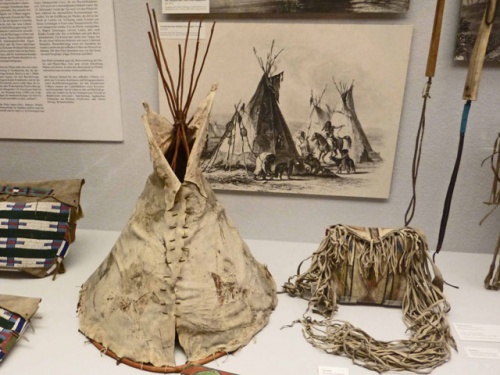
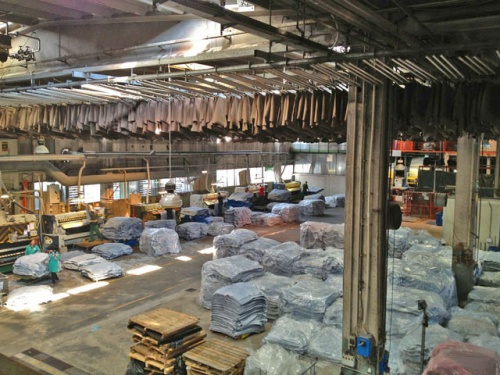
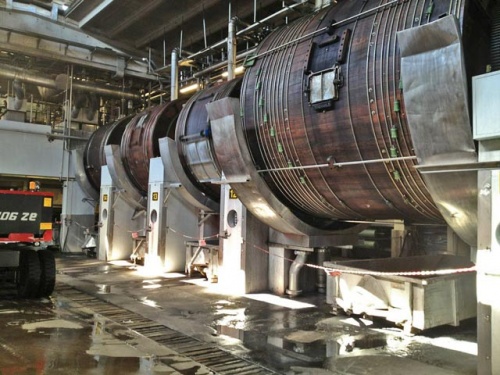
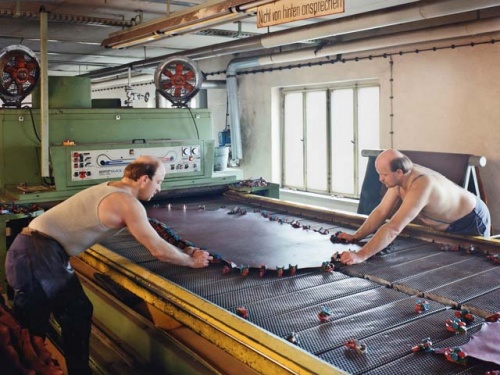
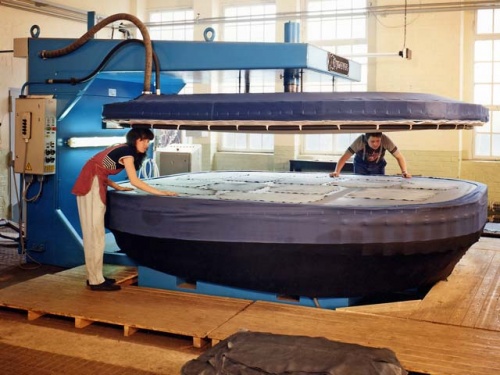
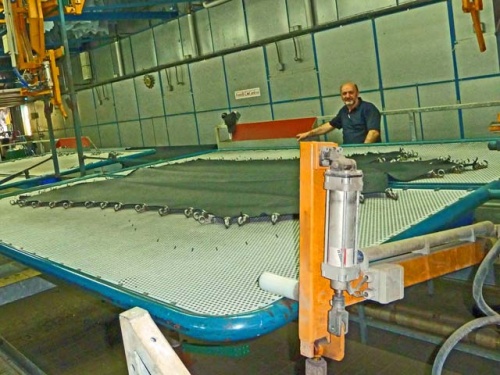
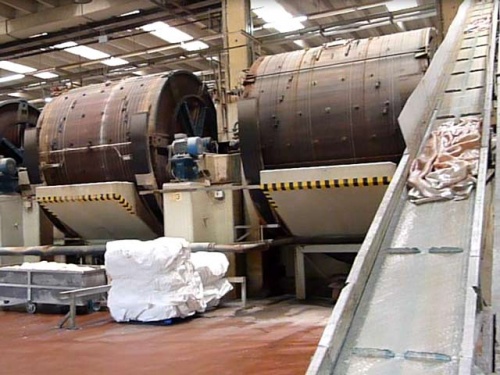
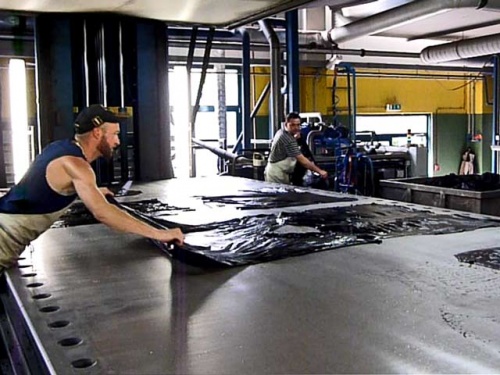
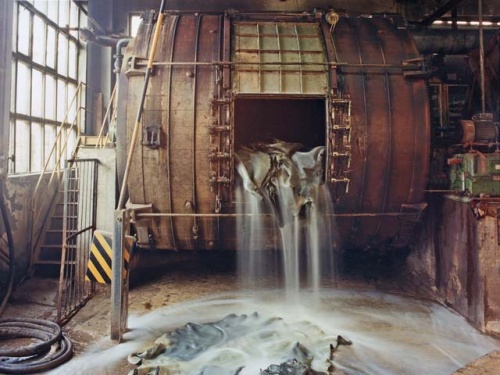
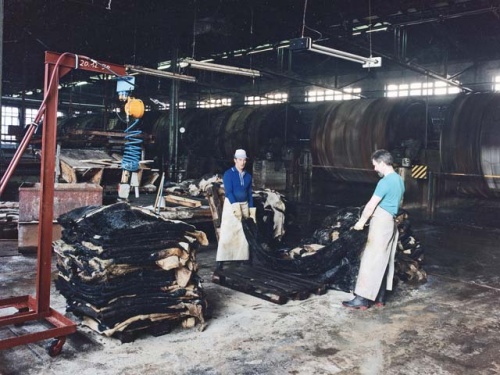
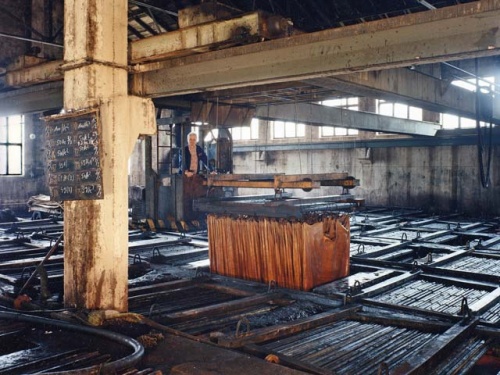
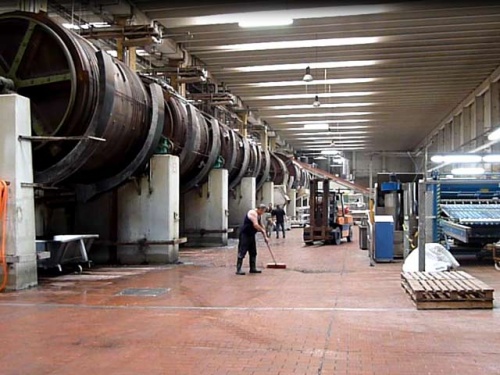
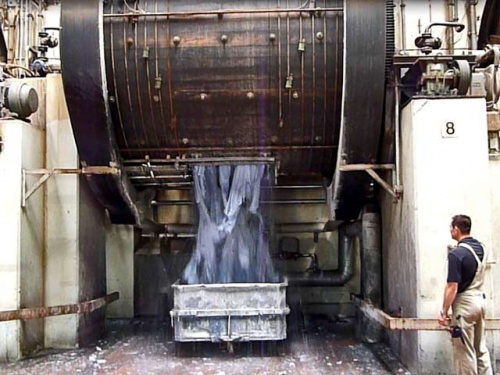
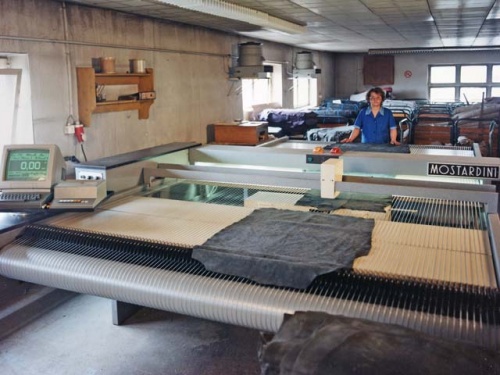
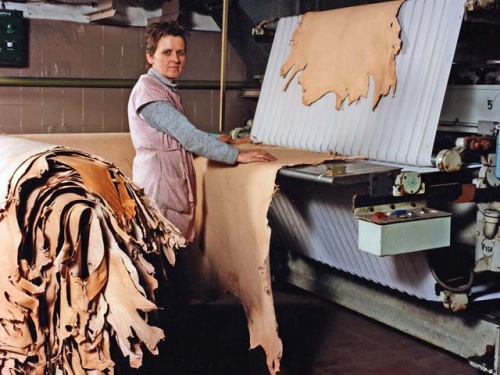

 a kotori web solution
a kotori web solution